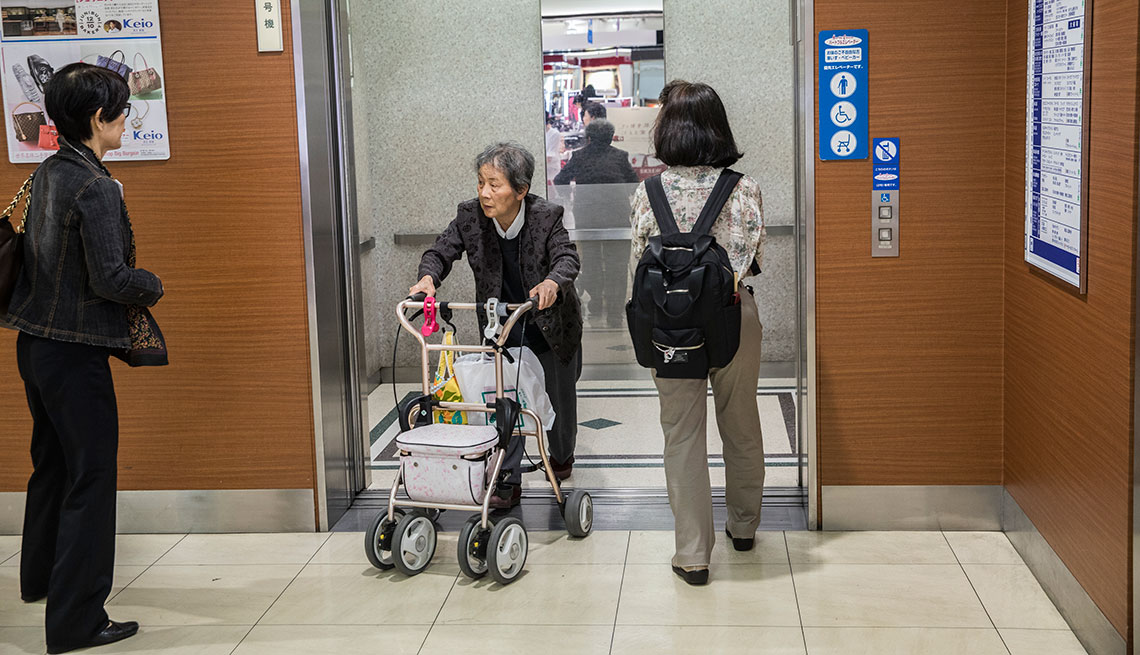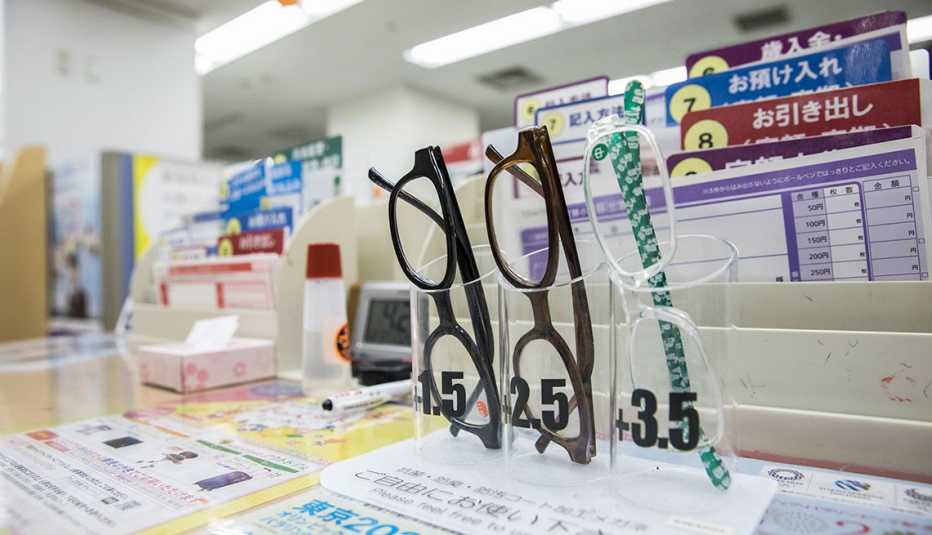AARP Hearing Center
Shortly after I arrived in Tokyo on a visit this spring, I went to a bank to get some money. As I was filling out a withdrawal slip, I noticed a pair of reading glasses left behind on the counter. So I took them up to the window and said, “Somebody forgot their glasses.”
The teller was too polite to laugh in my face, but I saw the amusement in her eyes as she set me straight. “Oh, those glasses aren’t forgotten,” she explained. “We provide reading glasses on the counter because so many of our customers need to use them. We have three different strengths so we can fit everybody.”
Sure enough, at every bank, post office or hotel counter I passed, I saw boxes of reading glasses bearing friendly labels like “Feel free to use these.” And I noticed that many customers routinely did just that.
Readily available reading glasses are one of countless ways that Japan is adapting to the everyday needs of the world’s oldest population. With a higher percentage of older people than any other country — and among the world’s highest life expectancy rates — the nation is taking steps to accommodate the needs of senior citizens, or kōreisha (a word formed from three Chinese characters meaning “upper,” “age” and “person”).
Books, magazines, train schedules and telephone directories are routinely printed in both normal and large-print editions. At major crosswalks, next to the button that pedestrians push to get a walk signal, there’s a second button that can be pushed to get extra time to cross. Virtually every hotel, department store and train station prominently displays bright orange defibrillator machines with instructions for their use in emergencies. In buildings that have a bank of elevators, there is often one priority elevator for people with wheelchairs or walkers. Escalators, too, have been modified to take wheelchairs. As befits a Confucian culture, there’s a national holiday (Sept. 17) called Respect for the Aged Day.


All of which represents Japan’s response to the inescapable fact of a rapidly aging society. For the past several years, the nation of 127 million has recorded more deaths than births. The government this spring reported that some 27.7 percent of Japanese people are over age 65, the highest proportion ever recorded in that country.
































































